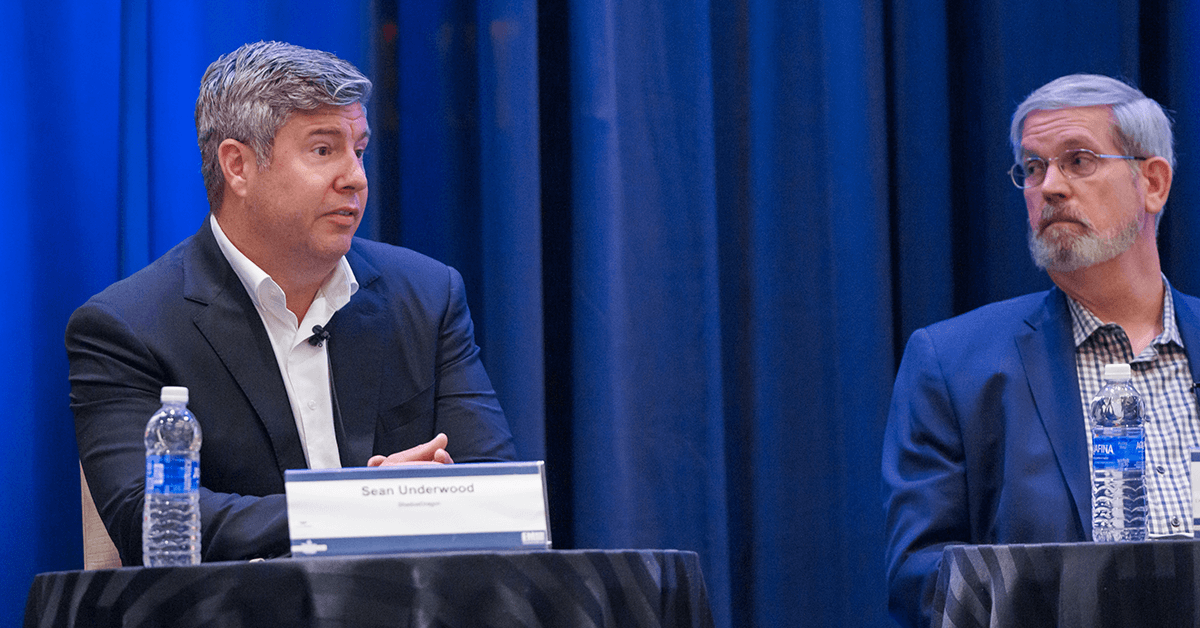As is evident from the modern way battles have been waged in Ukraine and elsewhere, warfare and military relations are becoming increasingly driven by technology and data. If we engage in a conflict with near-peer or peer adversaries like China down the line, “data is going to be key to that” too, predicted Brad Ahlskog, chief of the Open-Source Intelligence Integration Center within the Defense Intelligence Agency.

“From where I sit, in 10 years, the [Intelligence Community] will be much more focused on the data, more so than the actual source of the data,” Ahlskog continued. He was musing on how the perception of open-source intelligence — a.k.a. OSINT, information extracted from readily available sources like the internet or any public domain — is evolving at a fast clip. The federal executive participated in a panel discussion about OSINT and artificial intelligence as industry enablers at the Potomac Officers Club’s 2024 Intel Summit on Thursday.
Calling your attention to the Potomac Officers Club’s hotly anticipated 2024 Homeland Security Summit on Nov. 13. If you’re a contractor trying to serve the national security mission, you won’t want to miss this packed day of illuminating keynote speakers, panel discussions and Q&A sessions. Check out the full lineup and save a spot now.
Given that so many organizations and officials across the IC and the government at large collect and utilize OSINT, it’s not advisable to establish a centralized organization that handles open-source activities, Ahlskog and his fellow panelists, Exovera Vice President for Intelligence Integration Frank Miller and ShadowDragon Vice President for Public Sector Sean Underwood, agreed.
“There’s been proposals and lots of discussions out there and think tank studies about, ‘do we need to create an IC OSINT agency?’ Well, the entire OSINT community inside the government does not believe that will be successful because, one, it would be very expensive. And two, open source information is already being used by every single intelligence discipline every day right now,” Ahlskog argued.
“It would be unwise, from my perspective, to pull all of that goodness that’s happening at the mission level out and try to centralize it. Because I believe, based on what I see every day, everyone is using open-source,” he continued.

Decentralization was a common theme of the panel. Moderator Jim Edwards, chief growth officer at SOSi, began by pushing back against the idea that “if we had five world-class [AI] companies, we’d be okay.”
“I think that’s a recipe for post-Cold War lack of innovation—Big Five. I think what you’re going to see in this space, particularly with AI, is you’re going to see hundreds of great companies and that’s what’s going to drive innovation,” Edwards noted.
Miller concurred, adding, “There’s a need to sort of distribute the wealth and look at the different ways and the different techniques that these companies have, instead of trying to find one big unicorn, if you will, to do what you need. Yes, contracting is easier with one company, but sometimes what you need is a mishmash of a whole bunch of others. And it’s the crowdsourcing that gets you where you want to be.”
Tapping into a series of industry collaborations, DIA is set to deliver a new tool by the end of the year specifically geared toward OSINT collectors. The Primary Open Source Tasking Management Aggregation Network, or POSTMAN, will work to task, collect, process, exploit and disseminate — TCPED for short — open-source intelligence. It’s something that Ahlskog terms a “key industry lift,” something “we do not have the capacity to do and will not be successful without those deep partnerships.”
The 2024 Homeland Security Summit will feature high-ranking CISA officials like the chief information officer and chief privacy officer, as well as the deputy chief AI officer for Customs and Border Protection. Hear what they have to say—sign up for the Nov. 13 event today.





